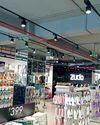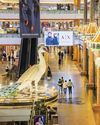
The luxury furniture sector in India is witnessing a remarkable transformation, driven by changing consumer preferences and digital innovation. As we delve into this exciting shift, it's clear that the industry is not just growing it's redefining the very essence of luxury furniture shopping.
Market on the Move
Recent industry analysis paints an optimistic picture for India's luxury furniture market. With an estimated value of $4.35 billion in 2024, the sector is poised for substantial growth over the next five years. Projections suggest the market will reach approximately $5.35 billion by 2029, reflecting a steady compound annual growth rate (CAGR) of 4.24%. These figures underscore the robust development and increasing consumer interest in high-end furniture within the Indian market.
Parallel to this, the online furniture retail sector in India is set for explosive growth. Between 2024 and 2029, the e-commerce furniture market is expected to see a revenue increase of nearly one billion U.S. dollars a growth of almost 50%.
By 2029, analysts project revenues to reach $3.06 billion, marking a historic high for the Indian furniture e-commerce industry.
The Changing Face of Luxury Consumption
The landscape of luxury consumption in India is undergoing a significant transformation, driven by several key factors. Economic growth has led to a substantial increase in disposable income, while globalisation and urbanisation have exposed consumers to international trends and lifestyles. This has resulted in a growing appreciation for aesthetics and sophisticated living.
This story is from the August 2024 edition of Images Retail.
Start your 7-day Magzter GOLD free trial to access thousands of curated premium stories, and 9,000+ magazines and newspapers.
Already a subscriber ? Sign In
This story is from the August 2024 edition of Images Retail.
Start your 7-day Magzter GOLD free trial to access thousands of curated premium stories, and 9,000+ magazines and newspapers.
Already a subscriber? Sign In

Leading The AI Revolution In Retail
As a leader in AI-driven retail intelligence, Sadique Ahmed, CEO, Pathfinder, understands the power of technology when it comes to improving and personalising the shopping experience for all.

Flipkart Deployed Over 10,000 Electric Vehicles in the Delivery Fleet
E-commerce major Flipkart on Monday said it has deployed over 10,000 electric vehicles (EVs) in its delivery fleet as part of a phased integration of EVs in the last mile delivery over the past few years.

Trent Q2 Profit Grows 47% to 335 Cr
Tata Group retail firm Trent Ltd. reported a 46.9% growth in its consolidated net profit to ₹335.06 crore for the second quarter ended September 2024.

Zomato, Swiggy Hike Platform Fee in Certain Cities Amid Festive Season
Online food delivery platforms Zomato and Swiggy hiked platform fees in certain cities amid the festive season. The two rivals are now charging ₹10 as a platform fee in the national capital.

The Evolution of Retail in North India
Emerging Hotspots, the Rise of Malls, and the Impact of the Residential Property Boom on the Region’s Retail Landscape

Madan Retail: Fashion for Today's Man
With a rich legacy and a keen eye on future trends, the brand continues to innovate and expand, meeting the evolving needs of its customers

Special Events in Malls
Giant Peacock, Lotus, and Swan: Orion Malls' Festive Spectacle

Building a Retail Legacy on Efficiency
Founded by Hemant Agarwal and Rahul Jhunjhunwala, V-Bazaar began operations in May 2016, opening its first store in Lakhisarai, Bihar.

From Urban Trends to Rural Aisles
V-Mart, a pioneer in the value retail segment, was founded by Lalit Agarwal in 2003—well before value retail became a widely recognized term.

Defining Elegance
Dennison has carved a niche in the menswear market with a diverse range of formal and semi-formal pieces priced between ₹999 and ₹3,999.